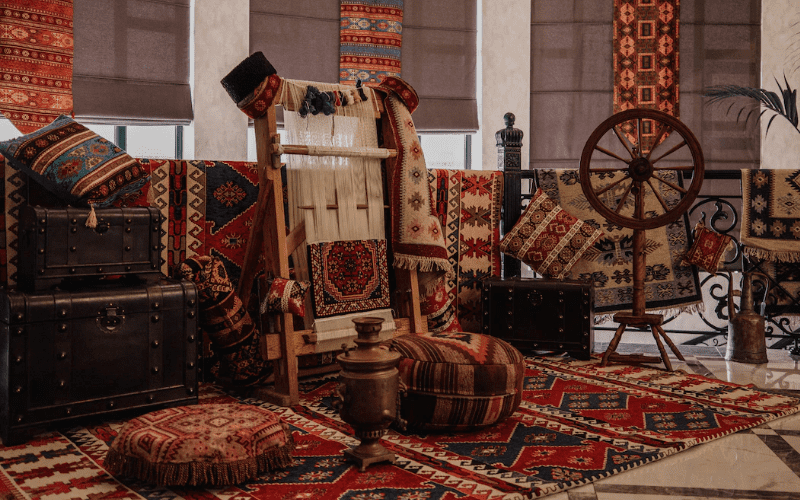The layering of rugs is a trend that is gaining popularity and it’s easy to see why. When you layer a rug, you can create more of an impact than with just one rug. They are not only great to look at, but they also add warmth to the room, making it more cozy and comfortable. However, if you don’t know how to layer your rugs, then this can cause some problems. In this guide, we’ll show you how to layer your rugs in the right way.
Check The Size of Your Area Rug
Make sure you get the right size area rug for your room. Large rugs are often used in spaces where you want to make a statement, like an entryway or living room. If you’ve got a large space, then you can use a larger rug here.
Smaller spaces may benefit from smaller rugs that draw attention to specific areas of interest within the room, such as seating areas or even an ottoman or coffee table on which to rest drinks and snacks while watching TV with family members or friends. Layering two different sizes at once will allow you to create an interesting look while also showcasing how versatile these pieces can be in any setting.
A Rug Pad Protects Both of Your Rugs
Rug pads are another way to protect your floor. They help keep the rug in place, which protects both the top and bottom of your rug. If you don’t have a good pad, then all of that movement can cause damage to your flooring over time. A good pad will also provide cushioning for your feet if you’re walking on it with bare feet or shoes without much cushioning. This is especially important if you often find yourself falling asleep on the couch while watching TV shows because let’s face it, nothing feels better than waking up on a soft surface!
You’ll want to make sure that you get a rug pad that’s made specifically for each type of carpeting or hardwood flooring that you have in your home (or apartment). It should also be made from foam instead of rubber. So, that there’s no risk of slipping when walking around in socks or slippers at night when everyone else has gone to bed already.
You can add a non-slip rug pad under your rugs to prevent them from slipping. This is especially important for high-traffic areas in the home, such as a kitchen or hallway. Rug pads help keep your rugs in place and prevent fraying and stretching of the fibers over time. This can also help protect delicate floors from scratches. If you have kids or pets who could be injured by falling off these layers then make sure there are non-slip pads underneath them!
- Anime Rugs
- Modern Rugs
- Cartoon Rugs
- Outdoor Rugs
Use Different Styles
When you layer rugs, you don’t want to go overboard and use four or five different styles. You can get away with three or four but no more than that. Remember, the idea is to create a cohesive look for your flooring by layering different elements on top of one another. One way you can do this is by using different sizes and shapes of rugs in your room. For example, if your main rug is rectangular, consider adding some round ones around it. They’ll provide contrast while still complimenting what’s already there!
Another way is by using color and pattern variety. If the first rug has a red background and black stripes, try pairing it with one that has a blue background and yellow flowers instead! This will create interest without making things feel chaotic. Your eye will naturally be drawn toward contrasting colors instead of each individual element in the room (which could end up looking busy).
Layering High Pile and Low Pile Rugs
Don’t be afraid of mixing patterns, colors, or materials pairing up a vintage tribal piece with an industrial-style runner will feel more natural than you think. You can layer a high pile rug with a low pile rug, or you can layer a low pile rug with a high pile rug. It really depends on your style and mood. If you’re looking for something more plush and soft, try layering a higher-pile rug over the top of it. If you’re looking for something that will be easier to clean, try layering the tougher one under it so that it can protect it from stains and dirt on the floor underneath.
Conclusion
Layering rugs is a great way to add style and texture to your home. Consider using different shapes, sizes, and materials in your rug collection. We hope this guide has helped you better understand the basics of layering. Think of some unique styles and textures for your space and you are done with some exciting home features. Call +86 13613866590 to book your order now.

